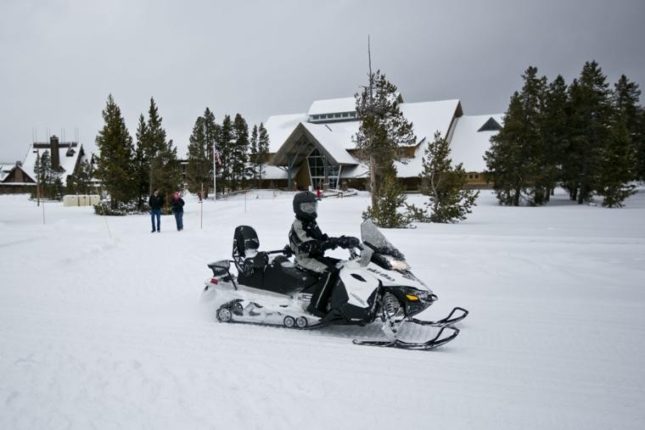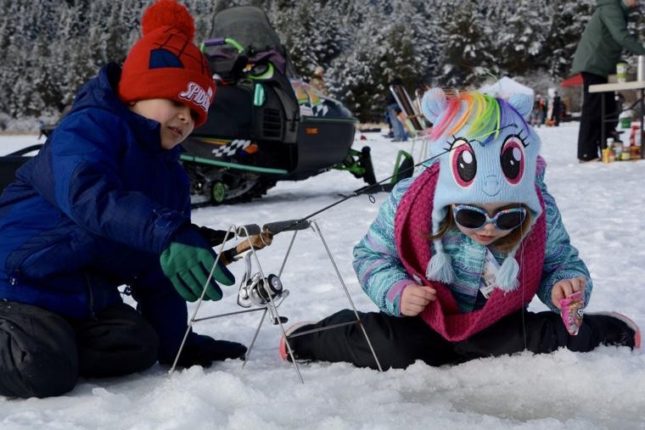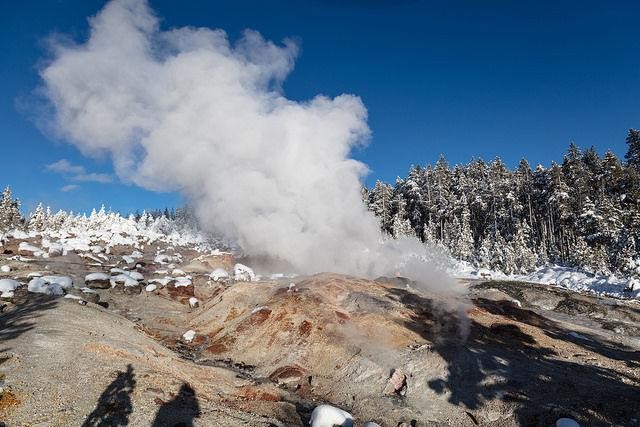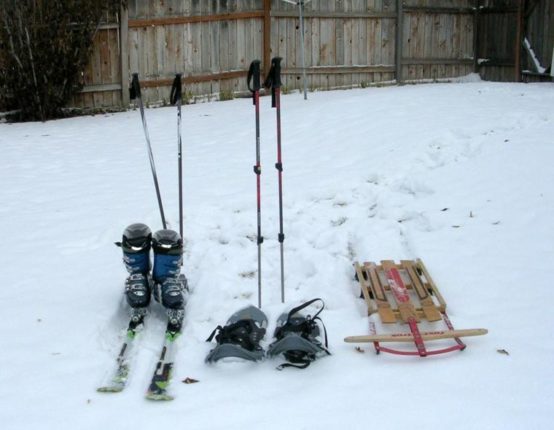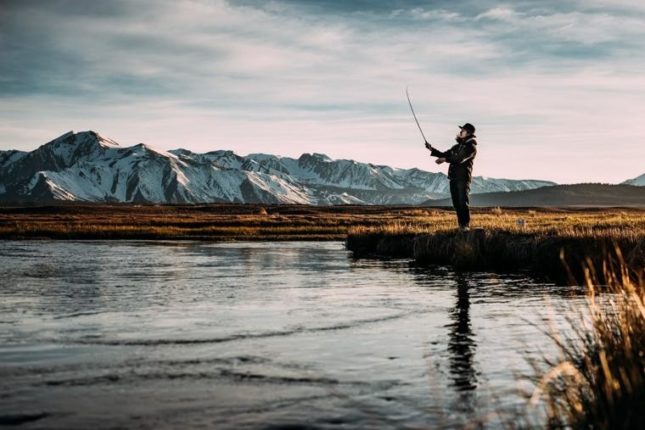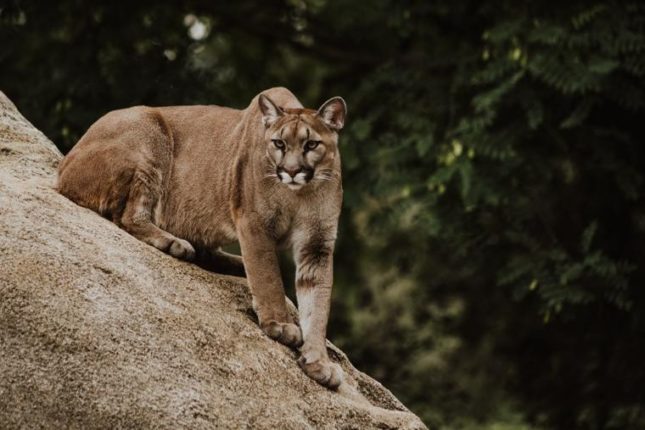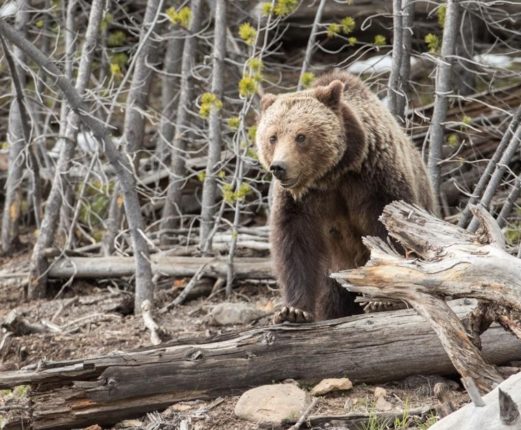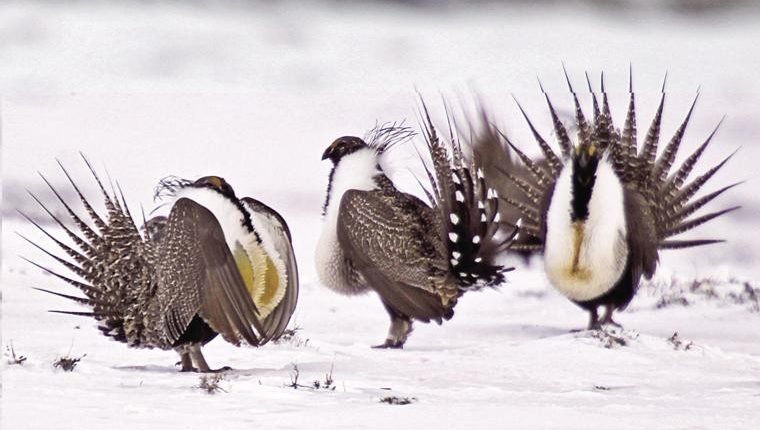If you haven’t tried ice fishing in Idaho yet, you’re missing out on a winter activity that is not only fun and inexpensive, it’s a great way to catch lots of tasty fish. Not convinced? Here are 10 reasons why you should go ice fishing:
1. Ice fishing is a good reason to get outside during winter: Winter can give us all a nasty case of cabin fever, but unlike many other activities that make you wait until spring, you can keep fishing during winter. A day on the ice is not just another fishing trip, it’s a whole different fishing experience.
2. It’s surprisingly beginner friendly: Ice fishing may seem specialized, and part of it is because it’s the only type of fishing that requires an ice auger. But aside from that, nearly any fishing gear will work. You can also build your own ice fishing rods, or a batch of them, for a reasonable price. Here’s a DIY example. If you decide to buy your gear, an ice fishing rod/reel combo is inexpensive, and honestly, a lot of fun to fish with because even a modest-sized fish feels big. After that, all you need is a hook, weight and bait. You can make it as simple or as sophisticated as you want.
3. Ice fishing can be a combination of fishing and tailgating: The fishing part is always fun, but you can add more fun with the tailgating part. Bring a camping stove or grill, some food, your favorite beverages (hot or cold), lawn chairs, heater, etc. The only challenge is getting it out on the ice, and an inexpensive kids’ plastic toboggan can haul a surprising amount of gear. If you have a snowmobile or ATV, there are trailers and sleds that are great for hauling cargo.
4. You can take the whole family, and more: There’s no shortage of space on a frozen lake when there’s adequate ice thickness, so the more the merrier. That’s not always the case when you’re trying squeeze people into limited boat space, or even limited bank access to prime water. The whole lake, reservoir or pond is available, so you can make it a social gathering as well as a fishing trip. Naturally, everyone should be dressed for the weather, and bring lots of snacks and warm drinks for the kids. They love ice fishing because they can scamper around and have fun on the ice if fishing is a little slow.
5. The fish taste better: That may sound like an old wive’s tale — or a boast by ice anglers — but there’s scientific evidence that it’s true.
The “muddy” taste you sometimes hear about from fish can be caused by blue green algae, which can proliferate during warmer months. Blue green algae is gone, or greatly diminished, in cold and frigid water, so it no longer affects the fishes’ taste.
Regardless of the scientific reason, few anglers argue that winter-caught perch and trout (the most common quarry) are not tasty. You can catch a batch of them and have an awesome fish fry, and if you want, you can get it started while you’re still on the ice. Ice fishing is traditionally about catching fish for eating, so indulge, but stay within the bag limits.
6. No need to buy ice and pack a heavy, ice-filled cooler: Think of the money you’re saving.
7. It’s not as cold as it might seem: There’s no getting around it: It’s dead of winter and you’re standing on a sheet of ice. The temperature is what it is, but think of it as the opposite of the old cliche “but it’s a dry heat.” On a calm, sunny day, it can be amazingly comfortable on the ice, even when the thermometer is showing single digits. Part of that is the radiant heat from the sun, and the other part is dressing so all your exposed skin is covered and you’re dressed in layers so you can add and subtract clothing and adapt if conditions change.
8. Fishing can be fast, furious and fun: Like all fishing, there are no guarantees the fish will bite, but ice fishing is different than other types of fishing because you can fish up to five different lines at once. When the fish start biting, it can be fast paced because you’re trying to hook and land fish and keep all the lines baited and in the water. When you experience that first hand, you will understand why people look forward to ice fishing.
9. You could set a record: Think that’s a long shot? Maybe, but consider this: Lake Cascade is a popular ice fishing spot that has produced two world record perch since 2015, as well as numerous state records. Ice anglers were responsible for a string of record yellow perch.
10. Idaho has ice fishing in nearly every part of the state: No matter where you live, an ice fishing destination is probably within a couple hour’s drive and likely no more than three hours. If you don’t live near one, make it a weekend trip and stay at a motel, or if you have an RV, check if there’s a place to stay (preferably with electric hookups to run a heater). Think of it as a mini vacation and a fun winter get away.
Here are some of the best places around the southeast part of the state where you can try out this sport.
American Falls Reservoir: This is a great place to catch some big trout and perch through the ice. Remember, this is a large body of water, so ice conditions can vary greatly across the reservoir.
Bear Lake: Cutthroat, lake trout, rainbow trout and a unique Idaho fish called cisco can be pulled from this large water body that spans Idaho and Utah. Don’t worry, you just need one fishing license from either state to fish this lake. Just remember, only one line is permitted unless an angler possesses a two-pole permit. As with other large water bodies, the ice conditions can get “tricky” quickly from spot to spot, so be extra mindful of ice conditions as you fish across this water body. Dipnetting for cisco is permitted Jan. 1 through Feb. 15. Dipnets cannot be larger than 18 inches in any dimension; however, any size hole may be cut through the ice to catch cisco.
Chesterfield Reservoir: This is very productive fishery, and a fun place to catch some really nice rainbows. Imagine pulling a 2-pound fish through the ice! Bannock County maintains the road to this fishery, and sometimes the road is closed for weather.
Deep Creek and Devils Creek reservoirs: These bodies of water often see good catch rates during the winter with plenty of 12-inch rainbow trout and even some nicer fish pulling on the line.
Pocatello’s urban fisheries: The fishing ponds at both Edson Fichter Nature Area and the Portneuf Wellness Complex in Pocatello are very popular places to ice fish and offer the convenience of being right in town. There is a two-fish limit for each fishery.
